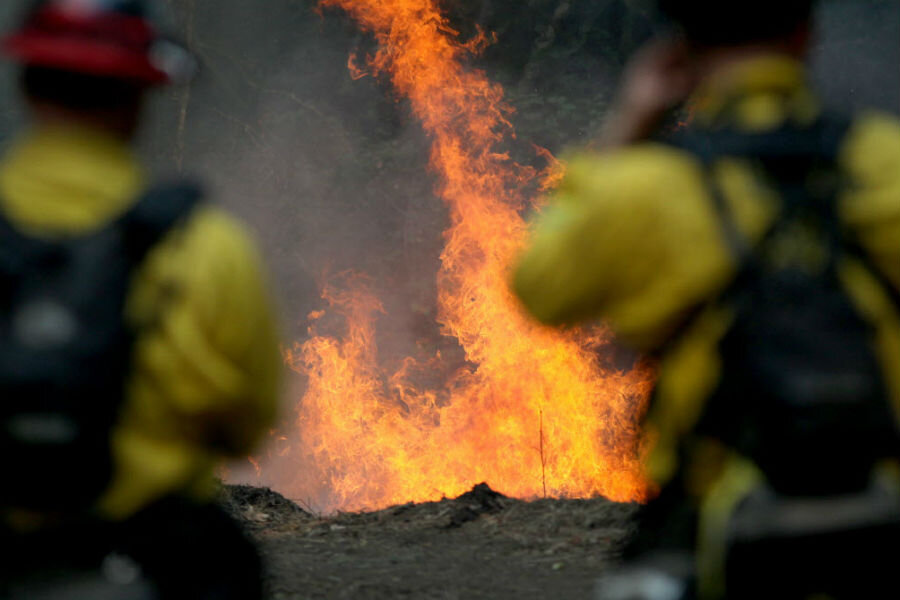California wildfire traced to campfire: How often are humans to blame?
Loading...
An abandoned campfire sparked California's largest and most destructive wildfire this year. Fire officials said Tuesday that they had identified the origin of The Soberanes Fire: a 2-foot diameter campfire lit in a scenic spot just off the Soberanes Canyon Trail on July 22.
Meanwhile, the wildfire continues to spread, extending to more than 69 square miles near Carmel and Big Sur as of Tuesday, after destroying 57 homes and leading to one death.
If human negligence was behind the fire, it's human determination that will extinguish it. More than 5,400 firefighters are currently battling the flames charring the steep, mountainous terrain and have managed to contain 25 percent of it.
It's illegal to set campfires in Garrapata State Park, said investigators, who are requesting information from people hiking in the area prior to July 22 for leads on who may have started the fire. That person could face criminal and civil penalties. Hikers spotted and reported the fire once they were able to reach cell reception, prompting the mobilization of the 510 fire engines, 51 water tankers, 72 bulldozers, 17 helicopters, and 6 air tankers now all working to contain it. A bulldozer operator who was fighting the fire on the front lines was killed last week when his vehicle rolled over.
Naturally occurring wildfires serve a purpose, clearing excess small trees and brush and allowing ecosystems to regenerate. But the annual number of large wildfires in the American West has increased by more than 75 percent, from roughly 140 fires in the 1980s to 250 fires in the 2000s, the Union of Concerned Scientists reported in 2014. And they claim human activity is to blame.
Ninety-five percent of Southern California's wildfires are caused by humans, Cal Fire, the state's firefighting agency, told National Geographic in 2014. While power tools set off more than 20 percent of fires in San Diego County between 2000 and 2010, campfires were a second place initiator, at nearly 10 percent of fires.
Some researchers have contended that humans also contribute to wildfires indirectly, with man-made climate change leading to the hot, dry climates conducive to wildfires. The season for wildfires increased by 19 percent worldwide between 1979 and 2013, according to a Nature Communications study.
Today, hikers are forbidden from setting campfires outside of campgrounds in much of California, due to the increased risk of fire after years of drought. Firefighters told USA Today that about 300 wildfires began last week in California, but almost all of them were quickly contained.
Cal Fire Chief Richard Lopez told KSBW the "devastating" wildfire would have been preventable if people followed state park rules, especially in remote areas. Full containment of the fire will probably not be reached until August 31, the agency said.
Firefighters in California's Central Valley are continuing to work to contain a different wildfire that has destroyed three homes, saying they have reached 60 percent containment.
But there is more humans can do to prevent the conditions for fires, which will require government resources to go to proactive rather than just reactive methods.
“We’re not good at doing maintenance, and then really bad things happen,” says Chris Topik, director of the Restoring America’s Forests program for The Nature Conservancy told Time in May. “Last year the wildfire season was terrible, worst in decades. The fire fighting sucked up all the money and then some.”
One method of reducing fire risk is prescribed burns whereby forest workers set a controlled fire to burn up excess brush that would otherwise speed the spread of wildfires. Another is to thin out forests, returning them to their much lower tree density before human influence, which has a number of benefits, Time reports, including healthier trees.
This report includes material from the Associated Press.








